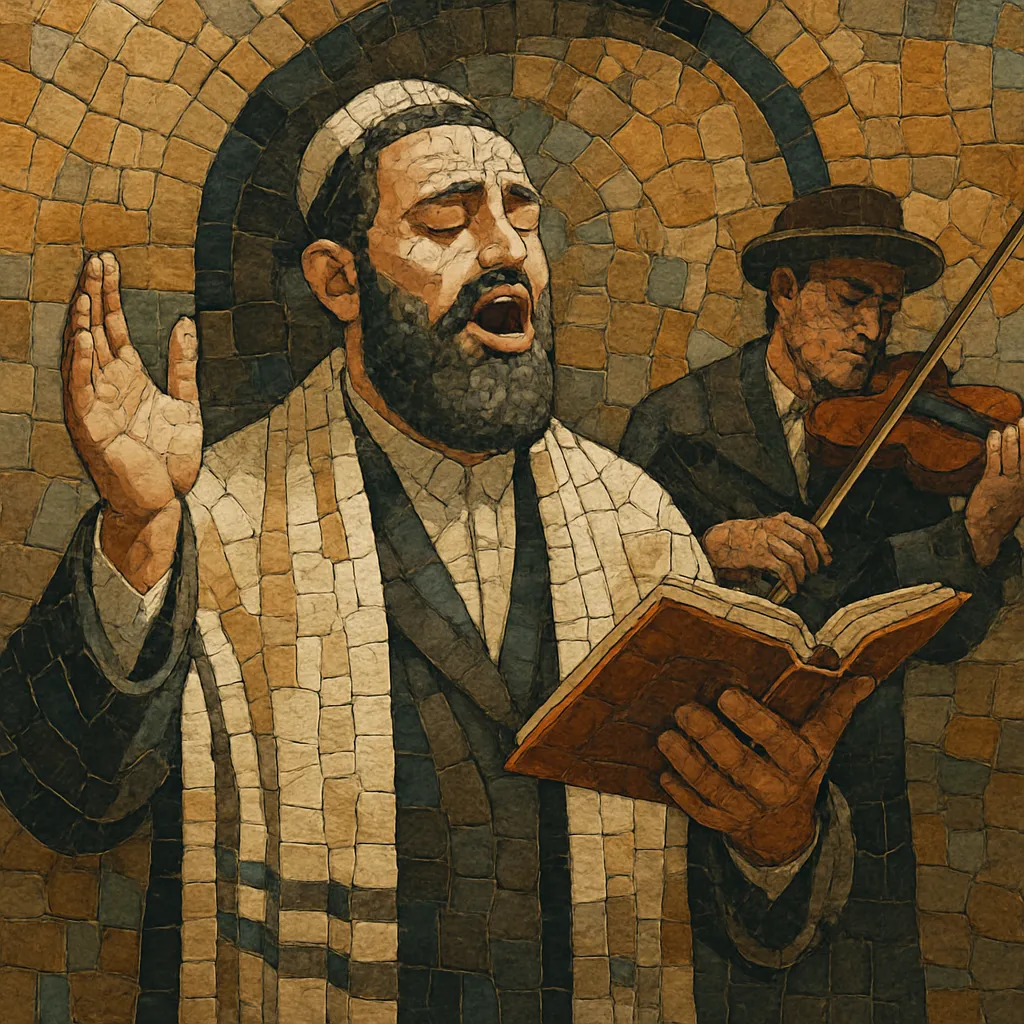Chazzanut (also spelled hazzanut) is the Ashkenazi Jewish art of cantorial singing: a virtuosic, highly ornamented solo vocal tradition devoted to leading the Hebrew liturgy.
It blends age-old synagogue modal systems (nusach and shtayger) with European art-music and operatic aesthetics, yielding free-rhythm recitative, melismatic arias, dramatic cadences, and heightened emotional delivery. While grounded in prayer, it also developed a parallel concert tradition in which star cantors performed elaborate settings with choir and, in some communities, organ or orchestral accompaniment.
Characteristic features include modal shifts tied to time-of-day and liturgical calendar, expressive ornaments such as krekhts (catch-breath sobs), extensive melisma, and improvisatory development that remains text-driven and devotional.
Chazzanut emerges from the role of the hazzan (cantor), the designated prayer leader in Ashkenazi synagogues. While the office of the hazzan is ancient, the distinctly virtuosic, concert-ready style coalesced in Central and Eastern Europe during the 19th century, as synagogue chant (nusach) encountered European classical and operatic currents. Cantors codified modal practices (shtayger) and developed a repertoire of recitatives and arias aligned to specific prayers and occasions.
By the late 1800s and early 1900s, an international "golden age" of star cantors blossomed—especially in Poland, Lithuania, and surrounding regions. Singers such as Yossele Rosenblatt and Gershon Sirota drew large audiences, recorded prolifically, and toured widely. Concert versions often added professional choirs and—in some non-Orthodox settings—organ, reflecting contemporaneous Romantic and operatic influence while retaining liturgical core and Hebrew text.
Mass Jewish migration before and after World War I, followed by the devastation of European Jewry in the Holocaust, shifted chazzanut’s center of gravity to North America, Israel, and later global diasporas. In the United States, cantors continued to record, concertize, and teach, while also adapting to new synagogue cultures. Some crossed into Yiddish theater and early American stage/vaudeville, introducing cantorial coloratura and pathos to secular contexts.
From the late 20th century onward, conservatories and cantorial schools professionalized training; archival reissues and festivals spurred renewed interest. Today, chazzanut thrives in both Orthodox and non-Orthodox synagogues, on concert stages, and across digital platforms. Contemporary cantors blend historical styles with modern harmony and tasteful amplification, balancing fidelity to nusach with communicative artistry.


